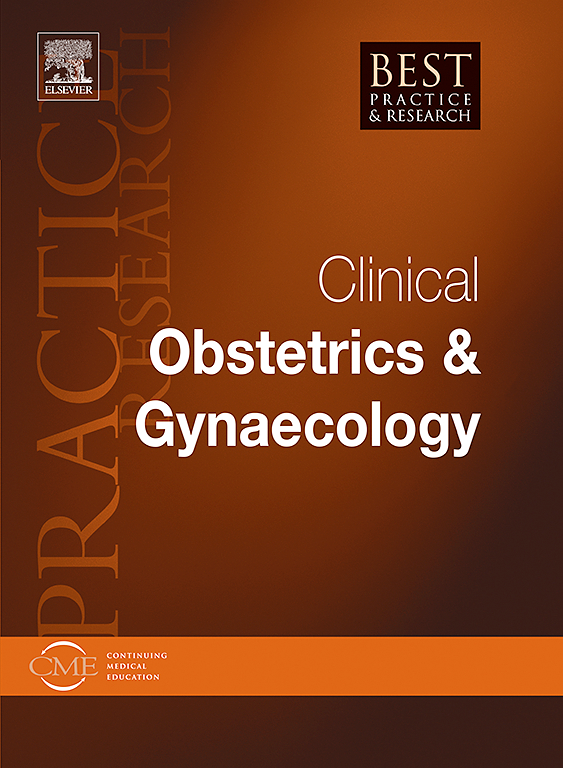The effects of cancer treatments on uterine function
IF 4.1
2区 医学
Q1 OBSTETRICS & GYNECOLOGY
Best Practice & Research Clinical Obstetrics & Gynaecology
Pub Date : 2025-06-27
DOI:10.1016/j.bpobgyn.2025.102629
引用次数: 0
Abstract
Advancements in cancer treatments and associated increased survival rates have led to a growing number of girls and women facing reproductive health challenges as a result of their oncologic treatments. Radiation and chemotherapy have been demonstrated to have adverse effects on fertility. Ovarian damage as a result of radiation and chemotherapy has been the subject of extensive study. Less well understood are the uterine changes mediated by these treatment modalities. Uterine damage from radiation therapy is related to dose, regimen, and patient age. Certain chemotherapies have demonstrated similar effects. Women with uterine damage have a lower likelihood of conceiving and a higher risk of pregnancy complications, including early pregnancy loss, preterm labor, and low birth weight infants. Surgical, medical, and genetic therapies are being evaluated to protect the uterus from treatment-related injury. Pre- and post-treatment consultation with oncofertility specialists is critical in assessing a patient's risk of uterine injury from a proposed cancer treatment plan as well as understanding treatment-induced injury to optimize fertility preservation.
肿瘤治疗对子宫功能的影响
癌症治疗的进步和相关存活率的提高,导致越来越多的女孩和妇女因接受肿瘤治疗而面临生殖健康方面的挑战。放疗和化疗已被证明对生育能力有不利影响。放疗和化疗引起的卵巢损伤一直是广泛研究的主题。对这些治疗方式介导的子宫变化了解较少。放射治疗引起的子宫损伤与剂量、治疗方案和患者年龄有关。某些化学疗法也显示出类似的效果。子宫受损的妇女怀孕的可能性较低,妊娠并发症的风险较高,包括早孕流产、早产和婴儿出生体重低。目前正在评估手术、药物和基因疗法,以保护子宫免受治疗相关的损伤。治疗前和治疗后咨询肿瘤生育专家对于评估患者在拟议的癌症治疗计划中子宫损伤的风险以及了解治疗引起的损伤以优化生育能力的保存至关重要。
本文章由计算机程序翻译,如有差异,请以英文原文为准。
求助全文
约1分钟内获得全文
求助全文
来源期刊
CiteScore
9.40
自引率
1.80%
发文量
113
审稿时长
54 days
期刊介绍:
In practical paperback format, each 200 page topic-based issue of Best Practice & Research Clinical Obstetrics & Gynaecology will provide a comprehensive review of current clinical practice and thinking within the specialties of obstetrics and gynaecology.
All chapters take the form of practical, evidence-based reviews that seek to address key clinical issues of diagnosis, treatment and patient management.
Each issue follows a problem-orientated approach that focuses on the key questions to be addressed, clearly defining what is known and not known. Management will be described in practical terms so that it can be applied to the individual patient.

 求助内容:
求助内容: 应助结果提醒方式:
应助结果提醒方式:


